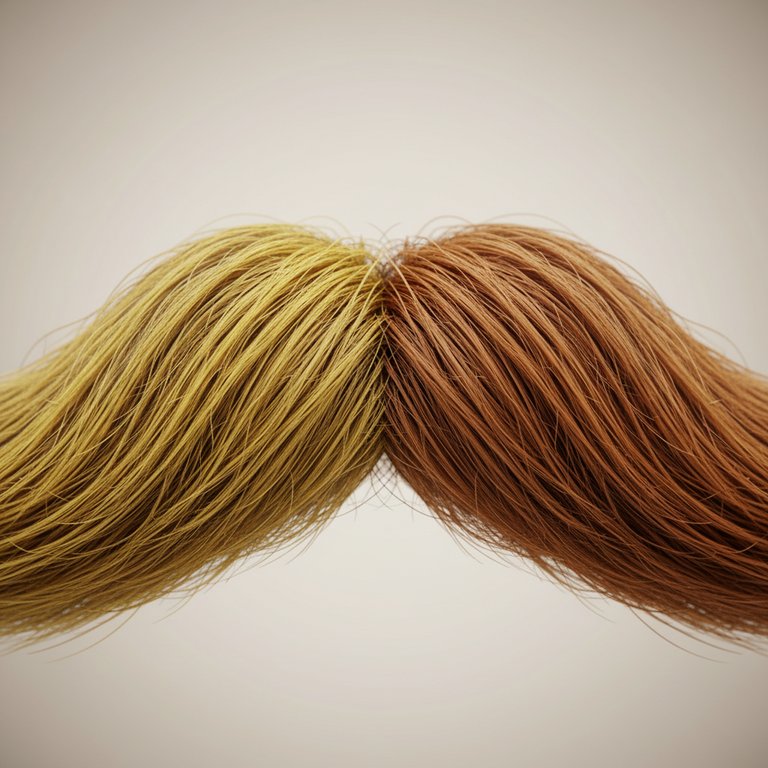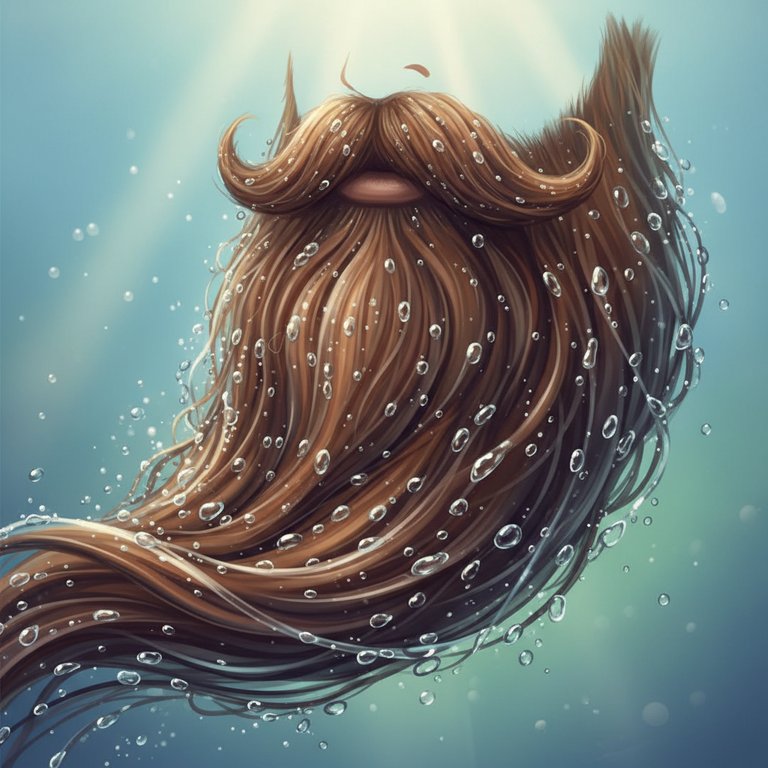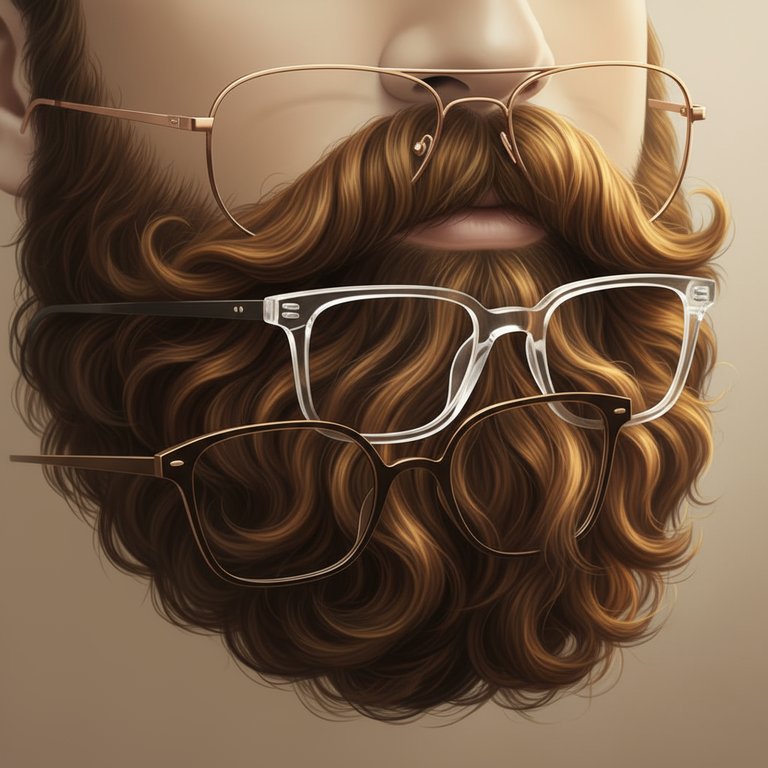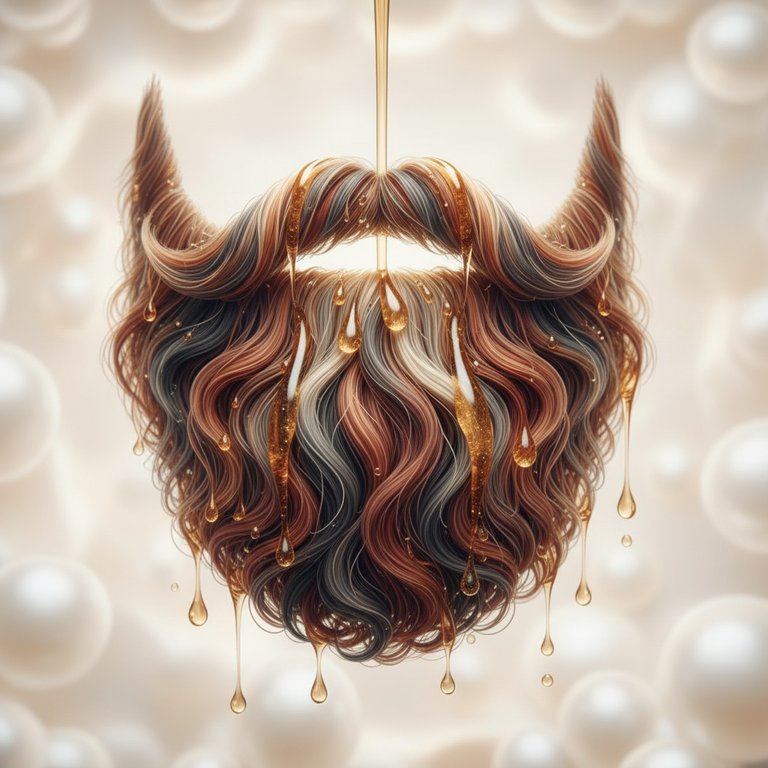Hey there, fellow beard enthusiast! Ever looked in the mirror and noticed your glorious mustache, once a pristine shade, is now sporting an unwelcome yellowish tinge? Yeah, it's a thing, and trust me, you're not alone. It can be a bit disheartening when you've put so much effort into growing and grooming your facial hair, only for it to start looking a little, well, dingy. But don't fret! This isn't some irreversible curse. More often than not, a yellowing mustache is a sign of a few common culprits that are totally fixable with a little knowledge and some consistent care. Think of me as your personal facial hair detective, here to help you uncover the mystery behind that yellowing and get your stache back to its vibrant best. Let's dive in!
The Usual Suspects: Why Your Stache Might Be Changing Hues
Just like the hair on your head, your mustache is constantly interacting with its environment, and that interaction can sometimes lead to discoloration. It's not always just dirt; sometimes it's a combination of things. Understanding the 'why' is the first step to getting your mustache looking sharp again.
Culprit #1: Food and Drink Stains – The Obvious Offenders
Let's be real, your mustache is right there, front and center, when you're eating or drinking. It's practically a built-in filter! This means it's incredibly prone to picking up stains from whatever passes your lips. Think about your morning coffee, that rich curry for dinner, a glass of red wine, or even sugary sodas. These can all leave behind pigments that cling to your mustache hairs, especially if they're not cleaned away promptly. Over time, these tiny, repeated deposits can build up, leading to a noticeable yellow or brownish tint. It's like leaving a coffee cup unwashed – eventually, it gets stained!
Personal tip: I’ve definitely had my share of coffee-stained moments. It's amazing how quickly a light-colored mustache can go from hero to zero after a particularly enthusiastic sip!
Culprit #2: Nicotine and Smoke – A Yellowing Habit
If you're a smoker, this one might hit close to home. Nicotine and the tar from cigarette smoke are notorious for staining anything they come into contact with – fingers, teeth, and yep, your mustache. The chemicals in smoke can deeply penetrate the hair shaft, leading to a persistent yellow-brown discoloration that's tough to wash out. Even if you're not a smoker but spend a lot of time in smoky environments, your mustache can still pick up those airborne particles and pigments.
Culprit #3: Environmental Factors – Sun, Pollution, and More
Your mustache is exposed to the elements every single day. The sun's UV rays, much like they can lighten or alter the color of the hair on your head, can also impact your mustache. Prolonged sun exposure can cause natural pigments in your hair to oxidize and change, sometimes resulting in a yellowish hue. Beyond the sun, general air pollution – dust, grime, exhaust fumes – can also settle on your facial hair throughout the day, contributing to a dull, discolored appearance. Think of it as your mustache acting as a tiny environmental sponge.
Culprit #4: Product Buildup – The Unseen Residue
Are you a fan of mustache wax, balms, or oils? Most of us are! While these products are fantastic for styling and conditioning, if not washed out properly and regularly, they can accumulate. This buildup, combined with natural oils, dead skin cells, and environmental dirt, creates a sticky residue that can trap further impurities. This gunk can not only make your mustache feel greasy and look clumpy but also contribute significantly to a dull, yellowish appearance. It’s like painting over a dirty canvas – the underlying grime still shows through.
Culprit #5: Natural Oxidation – Just Like the Rest of Us
Sometimes, it's just your hair doing its natural thing. Over time, hair can undergo a process called oxidation, where exposure to oxygen and light causes its natural pigments to change. This is similar to how a cut apple turns brown when exposed to air. For some hair types and colors, this natural process can manifest as a subtle yellowing or brassiness. It's often more noticeable in lighter hair colors but can affect any mustache over time, regardless of how meticulously you care for it. It's just a part of the aging process for hair, which means you're still looking good, just evolving!
Your Action Plan: How to Combat a Yellow Mustache
Alright, now that we've identified the culprits, let's talk solutions! Getting your mustache back to its glorious self is totally achievable with a consistent and mindful grooming routine. Here’s a step-by-step guide to help you out:
- Wash Your Stache Regularly and Thoroughly: This is your first line of defense. Use a dedicated beard and mustache wash, not just regular shampoo or body soap, as these can be too harsh and strip natural oils. Gently massage the wash into your mustache, ensuring you get down to the roots and through all the hairs. Rinse thoroughly with lukewarm water until no suds remain.
- Focus on Drying: After washing, gently pat your mustache dry with a clean towel. Avoid vigorous rubbing, which can damage the hair. Ensuring it's completely dry helps prevent any lingering dampness from attracting environmental particles or becoming a breeding ground for product buildup.
- Mind Your Meals and Drinks: This might sound obvious, but being conscious of what you’re eating and drinking can make a huge difference. After enjoying staining foods or beverages, a quick rinse with water or a gentle wipe with a damp cloth can prevent stains from setting in. Keep a small, clean cloth handy if you're out and about!
- Protect from the Elements: If you spend a lot of time outdoors, consider using a beard balm or oil that offers some level of environmental protection. While there's no magic shield, a good quality product can create a slight barrier against pollutants and UV rays. For heavy smokers, reducing exposure to smoke is the most effective way to prevent nicotine staining.
- Regular Product Removal: If you use styling products daily, make sure you're washing them out completely every evening or at least every other day, depending on your hair type and product usage. Don't let waxes and balms sit and accumulate for days on end.
Extra Savvy Stache Care Tips from Your Pal
Beyond the basics, here are a few more pro-tips to keep your mustache looking its absolute best and help ward off that unwanted yellowing:
- Brush or Comb Daily: Regular brushing or combing with a dedicated mustache comb or brush helps distribute natural oils, remove loose hairs, and dislodge any surface dirt or food particles before they have a chance to stain.
- Consider a Deep Clean Occasionally: Every few weeks, you might want to consider a slightly deeper clean. Some beard washes are formulated to provide a more thorough cleanse. Just be careful not to overdo it, as excessive washing can strip essential oils.
- Stay Hydrated: Believe it or not, overall hydration can contribute to healthier hair. Healthy hair is generally more resilient and less prone to issues like dullness or discoloration.
- Patience and Consistency are Key: Reversing yellowing isn't an overnight miracle. It takes consistent effort. Stick with your improved routine, and you'll gradually see your mustache regain its vibrant, natural color.
- Trim Regularly: Trimming away old, damaged, or heavily stained ends can also help improve the overall appearance of your mustache. Plus, a well-trimmed mustache always looks sharper!
Your Burning Questions Answered: Mustache Yellowing Edition
I hear you! You've got questions, and I've got answers. Here are some real-talk responses to things people often wonder about their yellowing mustaches:
Q: Why does my mustache still look yellowish even after I wash it regularly?
A: Ah, the persistent yellow! If you're washing regularly but still seeing a yellowish tint, it could be a few things. First, are you using a dedicated beard/mustache wash, or just regular soap? A specialized wash is formulated to clean facial hair without stripping its natural oils. Second, it might be stubborn stains that have built up over time, or even hard water deposits. Sometimes, a thorough, consistent routine is needed over several weeks to truly lift those deeply set stains. Also, ensure you're rinsing *all* product out completely.
Q: Can my morning coffee or tea really make my mustache turn yellow?
A: Absolutely! Think about how coffee or tea can stain a white mug – the same principle applies to your mustache hairs. These beverages are rich in tannins and pigments that can cling to hair. If you're a regular coffee or tea drinker and don't clean your mustache shortly after, those stains can accumulate and become quite noticeable over time. It's one of the most common culprits!
Q: How often should I really be washing my mustache to keep it clean and prevent discoloration?
A: This really depends on your lifestyle and product usage. For most guys, washing your mustache 2-3 times a week with a good quality beard wash is a solid starting point. If you use a lot of styling products, eat particularly messy foods, or spend time in dusty/smoky environments, you might need to wash it daily. The key is to find a balance – enough to keep it clean and free of buildup, but not so much that you dry out your hair and skin.
Q: Is there a way to get rid of existing yellow stains on my mustache, or am I stuck with them?
A: You're definitely not stuck with them! While there's no magic wand, consistent and proper grooming can significantly reduce and often eliminate existing yellow stains. The step-by-step guide we just covered – regular washing with a good beard wash, thorough rinsing, and being mindful of staining agents – is your best bet. Over time, as you remove the buildup and prevent new stains, your mustache will gradually return to its natural color.
Q: What are the long-term effects if I just ignore the yellowing in my facial hair?
A: Ignoring yellowing won't cause any serious issues, but it can definitely impact the look and feel of your mustache. Long-term yellowing often means there's a buildup of product, food particles, and environmental grime. This can lead to your mustache feeling rough, looking dull and unhealthy, and potentially even becoming more brittle. Plus, it just won't look as sharp and well-maintained as you'd probably like!
Q: How quickly can I expect to see an improvement in my mustache's color after changing my routine?
A: Patience, my friend! You likely won't see a dramatic change overnight. For lighter, surface-level stains, you might notice an improvement within a week or two of consistent cleaning. For deeper, more established yellowing, it could take several weeks to a couple of months to see significant results. The key is consistency and sticking with your improved grooming habits.
Q: Do I need a special 'anti-yellowing' product for my mustache, or will my regular beard wash work?
A: For most cases, a good quality, gentle beard and mustache wash is perfectly sufficient. The goal isn't necessarily to "bleach" or "anti-yellow" your hair, but rather to effectively clean away the staining agents and product buildup that *cause* the yellowing. Focus on thorough, regular cleansing rather than seeking out specific "anti-yellowing" products, which aren't typically necessary for facial hair and can sometimes be too harsh.
Conclusion: Embrace Your Best Stache!
So, there you have it! A yellowing mustache isn't a life sentence; it's usually just a call for a little extra TLC and attention to your grooming routine. By understanding the common causes and implementing a few simple, consistent habits, you can keep your mustache looking fresh, clean, and vibrant. Remember, your mustache is a statement, and keeping it in top condition reflects your commitment to looking and feeling your best. Keep grooming, keep growing, and rock that magnificent stache with confidence!
Disclaimer: This blog post is for informational and educational purposes only and is not intended to provide professional advice. Always use grooming products as directed and consider individual hair and skin sensitivities.



